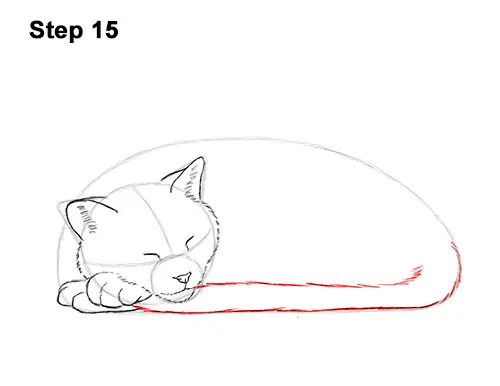
Step 15: Use the bottom edge of the sleeping cat's initial body shape as a guide to draw the tail. Follow the path of the guide and draw a series of strokes along it to create the furry tail. Directly above, draw another long line that's made up of short strokes for the top part of the tail. Curve the lines upward on the right side so that the tail connects to the cat's body.
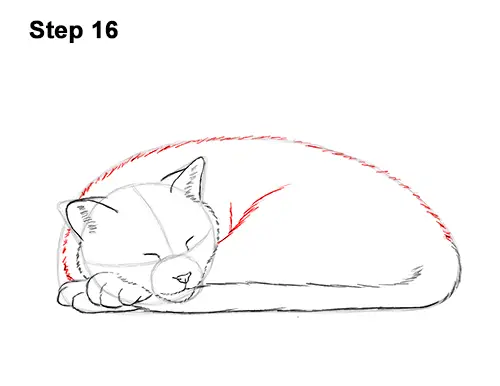
Step 16: Use the big, initial shape as a guide to draw the rest of the body. Follow the path of the guide and draw a series of short strokes along its path to create the shape of the body. Don't overlap the shape of the ear as you draw the strokes on the left side. To the right of the head, draw a couple of long lines made up of short strokes for the top parts of the cat's legs.
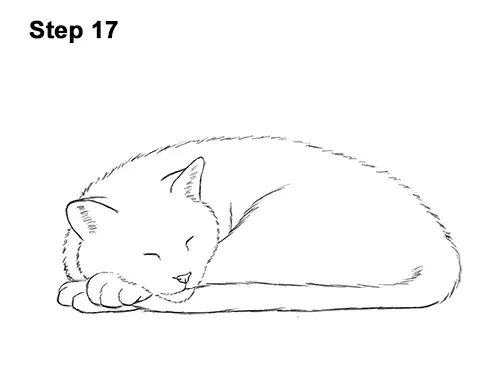
Step 17: For a cleaner look, erase as much as you can of the initial guide lines. Don't worry about erasing all of the guides. It's okay to leave some behind. Re-draw any final sketch lines you may have accidentally erased.
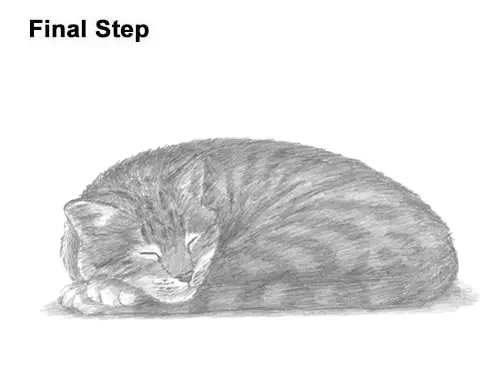
Final Step: Add some shading to your sleeping cat drawing to give it more dimension and volume. Pick the direction of the light source when shading so that the shadows are consistent with it. Vary the pressure on your pencil to get different degrees of tonal value. You can actually stop here for an all-white cat. For a tabby cat, continue to the next steps. For a more detailed guide on how to shade, check out this tutorial: How to shade.
Add a cast shadow underneath. This helps to ground the sleeping cat so it doesn't appear to be floating.
Add even more value throughout the sleeping cat's body for extra detail. Use a medium value for the edge of the ears. Use short strokes to create a shape around the closed eyes. Use dark strokes to add the tabby pattern above the eyes. Add some lines on the sides of the eyes using dark strokes as well. Now use a medium value to cover the head in short strokes. Don't overlap into the shapes around the cat's closed eyes.
The strokes should go in the general direction of the cat's fur. On the head, they should radiate outward from the middle. Add some dots on the muzzle for the base of the whiskers. I'm omitting the whiskers, but you can add some using long strokes if you'd like.
Shade the sleeping cat's body using strokes with a medium value. Shading can be time- consuming, so be patient and take breaks. Separate each individual stroke a bit so that the white of the paper comes through and creates a more fur-like texture. If you have a pet cat, try to duplicate its coat pattern on your drawing.
When you shade the tail, alternate between dark strokes and medium strokes to create a striped pattern. Using dark strokes, draw a series of curved bands across the body to create a striped pattern. Shade lightly at first, and then gradually build up to a darker value. Don't forget to pause the video after each step to draw at your own pace.
Thanks for visiting! Subscribe to the How2DrawAnimals YouTube Channel for a new tutorial every week.
To learn how to draw popular cartoon characters, visit EasyDrawingTutorials.com.
RELATED TUTORIALS
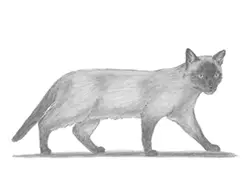 |
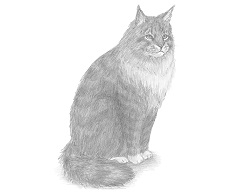 |
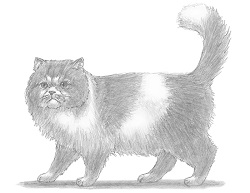 |







